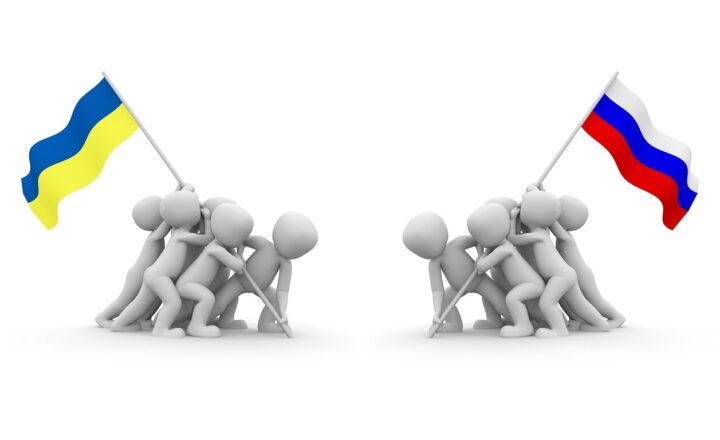The Role of Rivers and Oceans in Shaping Human Migration
November 17, 2024

Rivers and oceans have long been pivotal in shaping human history, serving not just as physical barriers but also as conduits for migration and cultural exchange. From the earliest civilizations that emerged along the banks of mighty rivers to the vast ocean routes that connected distant lands, these bodies of water have played a critical role in the movement of people, ideas, and goods. This article delves into how rivers and oceans have influenced human migration throughout history, highlighting significant events and trends while examining their lasting impact on our global society today.
1. The Importance of Rivers in Migration
Rivers have historically served as essential lifelines for human populations. They provide fresh water, fertile land, and vital resources that have supported agriculture and settlement.
1.1 Rivers as Trade Routes
Many of the world’s greatest civilizations developed along rivers because they enabled trade, transportation, and communication. Rivers such as the Nile, Amazon, and Yangtze have served as pathways for commerce, allowing for the exchange of goods and ideas.
– **Nile River**: The Nile not only provided sustenance through irrigation but also facilitated trade between Egypt and neighboring regions, enhancing cultural exchanges and migrations.
– **Amazon River**: The Amazon has supported various indigenous tribes who adapted their cultures around this immense waterway, thereby influencing migratory patterns of communities in search of resources.
1.2 Rivers as Borders and Barriers
While rivers can facilitate movement, they can also serve as natural barriers. Many borders throughout history have been established along rivers, creating divisions between cultures and limiting migration in certain areas.
– **The Rio Grande**: Acting as the border between the United States and Mexico, the Rio Grande has seen significant migration, influencing the demographics and culture of both nations.
– **The Danube River**: This river has acted as a historical boundary in Europe, affecting the migration of various tribes and nations, especially during times of war and conflict.
2. The Influence of Oceans on Human Migration
Oceans have shaped human migration on a much larger scale than rivers, serving as the primary routes for maritime exploration, trade, and settlement.
2.1 Oceanic Exploration and Settlement
Oceans have been the stage for significant migrations, especially during the Age of Exploration. Advances in navigation allowed humans to traverse vast bodies of water, leading to the establishment of new settlements.
– **Polynesian Migration**: The ancient Polynesians navigated the Pacific Ocean, utilizing their knowledge of stars, ocean currents, and winds, leading to widespread settlement across numerous islands.
– **European Colonization**: From the 15th century onwards, European nations explored and colonized various regions of the world, leading to significant demographic changes and migrations due to trade, slavery, and the search for resources.
2.2 The Role of Oceans in Trade and Cultural Exchange
The oceans were crucial in connecting different cultures through trade routes, leading to the exchange of goods, ideas, and people.
– **The Silk Road and Maritime Trade Routes**: While the Silk Road is primarily known as a land route, maritime trade routes across the Indian Ocean and the Mediterranean facilitated cultural exchanges and migrations, profoundly affecting the societies involved.
– **Transatlantic Slave Trade**: The ocean facilitated one of the darkest chapters in human history, where millions were forcibly transported, leading to deep cultural impacts in the Americas and Africa.
3. Climate Change and Waterways’ Impact on Migration
In contemporary times, rivers and oceans continue to influence migration patterns, especially in the context of climate change and environmental degradation.
3.1 Rising Sea Levels
As sea levels rise due to climate change, coastal communities are facing unprecedented risks, leading to forced migrations.
– **Maldives and Pacific Island Nations**: Many island nations are at risk of becoming uninhabitable, creating climate refugees who must migrate to other countries in search of safety and stability.
3.2 River Changes and Migration Patterns
Changes in river ecosystems caused by pollution, damming, and climate shifts have also forced communities to adapt.
– **The Mekong River**: Communities dependent on the Mekong River are now facing changes to their livelihoods due to dam construction and pollution, prompting internal migrations.
4. The Future of Migration Shaped by Rivers and Oceans
Looking ahead, rivers and oceans will continue to play a vital role in shaping human migration.
4.1 Urbanization and Waterway Development
As urban centers expand along rivers and coasts, the movement of populations towards these areas will likely continue, influenced by economic opportunities and living conditions.
4.2 Policy and Management of Water Resources
Effective management of rivers and oceans is critical. Policies addressing climate change, water resource management, and international cooperation will be essential to guide future migrations in a sustainable manner.
Conclusion
Rivers and oceans are more than just geographical features; they are dynamic forces that have shaped human history and migration patterns across time. As we navigate the challenges of the 21st century, understanding the relationship between water and human movement will be crucial for policymakers, communities, and future generations. By studying the past, we can better prepare for a future in which rivers and oceans continue to influence the migration of people and cultures around the globe.
Through this exploration, we recognize that the flow of humanity, like the flow of water, is a vital part of our collective existence, threading together stories, histories, and futures that span every continent and ocean.








